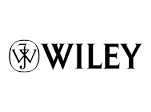Resource information
Grazing intensity and bush encroachment are disturbance factors that may alter the floristic composition of herbaceous species. This paper investigates impacts of grazing (intensity) and bush encroachment on herbaceous species and rangeland conditions in Borana, southern Ethiopia. Herbaceous species richness and the abundance of each species were greater in the light‐ and moderate‐grazed areas than heavy‐grazed sampling plots. Similarly, herbaceous species richness was highest at an intermediate level of biomass and seems to decline as biomass increases. Among a total of 40 herbaceous species recorded, 20 per cent were tolerant of grazing, whereas the remaining 80 per cent were highly susceptible to heavy grazing. In both encroached and non‐encroached sampling plots, species richness varied from three to six species 0·25 m⁻². Overall, herbaceous species richness and abundance, in relation to grazing gradient, might disclose a better picture of the effect of grazing on individual herbaceous species. As species richness seems to decline under heavy grazing intensity, low to intermediate grazing levels may promote and conserve key forage species in savanna grazing lands. Copyright © 2012 John Wiley & Sons, Ltd.



